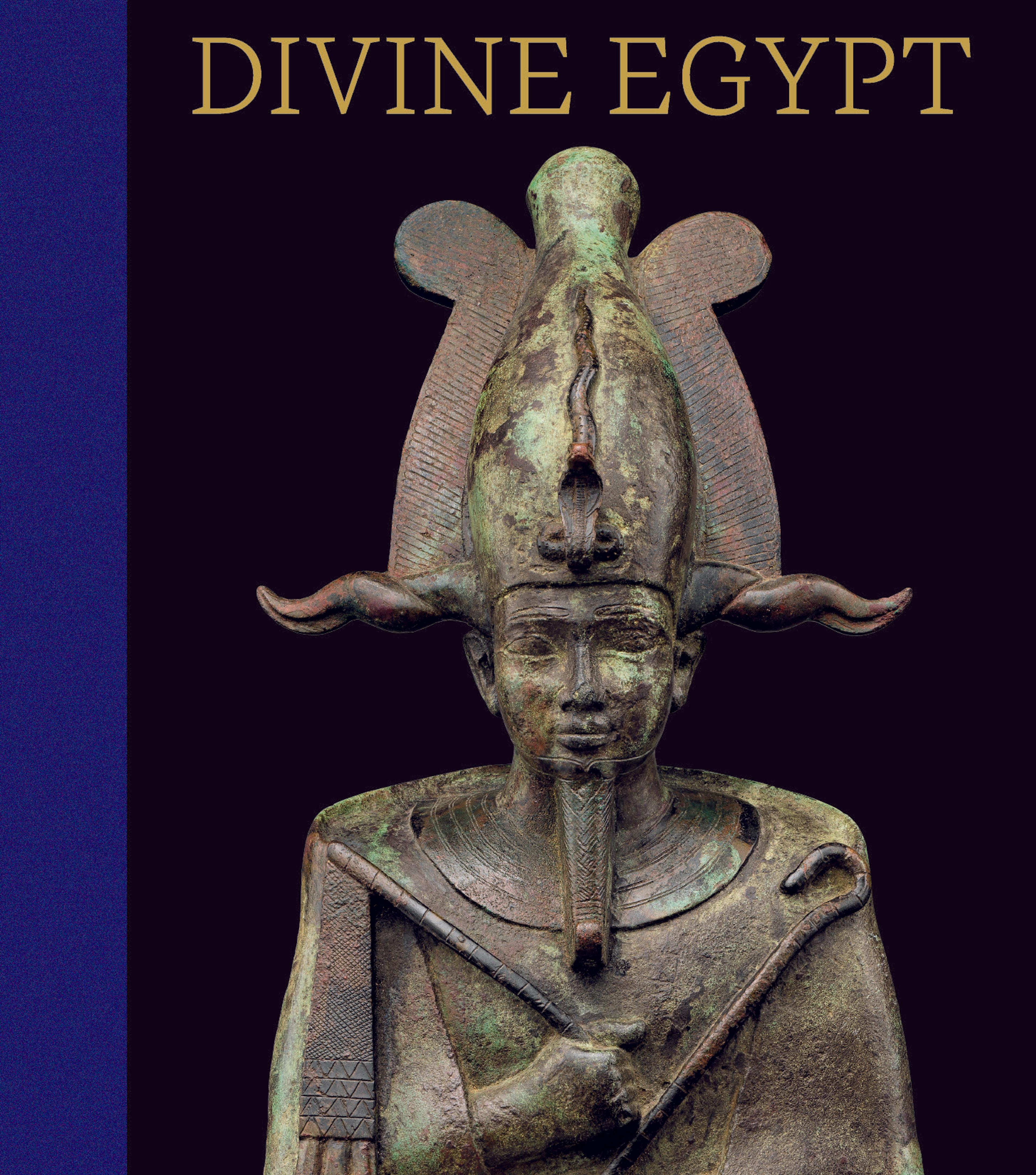Lintel depicting King Amenemhat I flanked by Nekhbet, Horus, Anubis, and Wadjet
In this relief Amenemhat I is shown celebrating his thirty-year jubilee (Sed Festival), ritually demonstrating that he was still vigorous and fit to rule. The king is flanked by the jackal-headed god Anubis and the falcon-headed Horus, deities closely associated with coronation rituals; each god offers him an ankh, the hieroglyph for life. To the left stands Nekhbet, patron goddess of Upper Egypt (the south), and on the right is Wadjet of Lower Egypt (the north), creating a symmetrical composition that evokes the unified land. The king wears a tightly curled wig, with an uraeus cobra on his brow to protect him from his enemies, and the false beard of kingship. He carries a flail, also a symbol of his rule, and a ceremonial instrument known as a mekes.
The first king of Dynasty 12, Amenemhat I is known to have been born in the south of Egypt, and may have served as vizier to the last ruler of the previous dynasty, Mentuhotep IV. Early in his reign, he moved the capital from Thebes to a new city in the north, Itj-tawy. In order to ensure the stability of his new dynasty, he also appears to have established a coregency with his son, Senwosret I, ten years before his demise.
This block was found in the foundations of the king's mortuary temple at Lisht, the royal cemetery of the new capital. It was reused from an earlier building that stood either at the same site or somewhere else in the area of Itj-tawy. The low relief carving is delicate, with many details only indicated by the well-preserved paint. In style, it is transitional between the Theban reliefs of Dynasty 11 (see for example 07.230.2) and that of the "Memphite" (northern) school, which would become the classical style of the Middle Kingdom.
The first king of Dynasty 12, Amenemhat I is known to have been born in the south of Egypt, and may have served as vizier to the last ruler of the previous dynasty, Mentuhotep IV. Early in his reign, he moved the capital from Thebes to a new city in the north, Itj-tawy. In order to ensure the stability of his new dynasty, he also appears to have established a coregency with his son, Senwosret I, ten years before his demise.
This block was found in the foundations of the king's mortuary temple at Lisht, the royal cemetery of the new capital. It was reused from an earlier building that stood either at the same site or somewhere else in the area of Itj-tawy. The low relief carving is delicate, with many details only indicated by the well-preserved paint. In style, it is transitional between the Theban reliefs of Dynasty 11 (see for example 07.230.2) and that of the "Memphite" (northern) school, which would become the classical style of the Middle Kingdom.
Artwork Details
- Title:Lintel depicting King Amenemhat I flanked by Nekhbet, Horus, Anubis, and Wadjet
- Period:Middle Kingdom
- Dynasty:Dynasty 12
- Reign:reign of Amenemhat I–Senwosret I
- Date:ca. 1981–1952 BCE
- Geography:From Egypt, Memphite Region, Lisht North, Pyramid Temple of Amenemhat I, MMA excavations, 1907
- Medium:Limestone, paint
- Dimensions:H. 36.8 × W. 172.7 × D. 13.3 cm, 183.7 kg (14 1/2 × 68 × 5 1/4 in., 405 lb.)
- Credit Line:Rogers Fund, 1908
- Object Number:08.200.5
- Curatorial Department: Egyptian Art
Audio
3315. Relief Decorated Lintel from a Building of King Amenemhat I
0:00
0:00
We're sorry, the transcript for this audio track is not available at this time. Please email info@metmuseum.org to request a transcript for this track.
More Artwork
Research Resources
The Met provides unparalleled resources for research and welcomes an international community of students and scholars. The Met's Open Access API is where creators and researchers can connect to the The Met collection. Open Access data and public domain images are available for unrestricted commercial and noncommercial use without permission or fee.
To request images under copyright and other restrictions, please use this Image Request form.
Feedback
We continue to research and examine historical and cultural context for objects in The Met collection. If you have comments or questions about this object record, please contact us using the form below. The Museum looks forward to receiving your comments.
